QuestionWe have 2 female dogs, one pitbull, one pit-mix. Both were
house trained but recently there has been an increasing
issue with urinating in the house. We find puddles that
range from small to very large.
We had Emma (pit mix) for a year prior to Kenzi (pit). This
issue started 3-4 months after we introduced Kenzi to our
home, and has progressively gotten worse.
The problem happens when they both are together
unsupervised.
They sleep in our bedroom with us at night, if we don't
confine them by closing our door, there is pee in the
hallway the next morning. They are fine if the door is
closed.
While we work during the day, one stays crated, one roams
free, alternately. There has not been any pee while one
remains crated.
I feel like we have work time and night time under control,
but the biggest problem is that when we are home, now more
often, one will sneak off and do it. We have yet to catch
which one is doing it, but we suspect both. This IS the
biggest issue. I feel like we have no control over this,
since its happening when we're here.
There is also some other things to be aware of in our
situation that may help solve our problem or at least
diagnose it. We are expecting a baby in March, my wife is 6
months pregnant. Could the dogs sense this and be lashing
out in some way?
We used to let them out all the time, morning, after work,
and at night for probably a combined total of 1-2 hours a
day in the yard. We have an electric dog fence for them, but
one of them has been slipping out after squirrels, so now we
walk them on a leash 4 times a day for about 10 minutes per
walk.
Thanks in advance for any help.
AnswerFirst thing you'll want to do is have the dogs checked out and get a clean bill of health from your veterinarian. Once you know you aren't dealing with an underlying health concern you can start working on behavior and training.
If you were take the simplest approach for the house training segment, you could just shut the bedroom door at night or keep the dogs in their crates overnight. Regardless of what way you decide to go, you'll want to give the area a thorough cleaning with an enzyme cleaner like Petastic or Nature's Miracle to remove scents that remind your dogs that they have been okay going to the bathroom in the house. You can rent a blacklight from the hardware to show you where there are areas that need cleaning.
You may want to investigate a fence for your yard to give your dogs a place to go outside without the risk of escaping through the Invisible Fence for squirrels. Depending on your situation, you could fence with a standard fence or put together a kennel type fence for bathroom breaks.
There are many good articles on my web site to help you in addition to what I'm sharing here.
Let me know if you have additional questions. Good Luck!
Links:
http://outlawchinooks.com/articles.html
http://outlawchinooks.com/Pack_Leader.html
http://outlawchinooks.com/dog_new_baby.html
http://outlawchinooks.com/Tips_Avoid_Dog_Bites.html
http://outlawchinooks.com/dog_safety_children.html
http://rileytrainingcenter.blogspot.com/
http://www.examiner.com/dogs-in-minneapolis/kathleen-riley-daniels
~~~
Dog - Potty Training Basics
Going to the bathroom in the house is one of the biggest issues for new puppy owners. You can easily win the battle if you are consistent, patient, use supervision, utilize confinement and reward your pup with scrumptious treats. Remember, you are teaching your puppy where to relieve him or herself rather than where not to relieve him or herself.
One of your first steps is to choose a place that you want your pup to eliminate. Once you have chosen the spot, always take your pup on leash to the spot and stand there for three to five minutes. If you don't have success, take pup back inside and place them in their crate. When you are home, make this trip every hour or two and praise success with voice and treats to expedite the learning process. You pup will quickly learn that elimination bring tasty rewards.
Use a Crate. Most dogs love their "den" as long as it is the right size. If it is too big, part of it will become a bathroom. If it is too small, it is uncomfortable. Your pup should have enough room to stand up, turn around and lay down. When pup is in the crate, provide a food stuffed chew toy like a Kong so pup has something to occupy the confinement time. The crate should help you predict when the pup needs to "go" so you can teach pup where and why it needs to eliminate outdoors.
Outside Time: Puppies need to relieve themselves frequently. Ideally, your pup should go outside every two hours.
Same Time, Same Place: Take pup out on a six-foot leash and stand in the place you want pup to "go." Praise pup for "going" in the right location.
Boo Boo? Show pup his mistake and let him know he was wrong with a firm "No!" Take pup outside and show him how you want it done. (Not literally!)
Don't rub pup's nose in "it" unless you want him to eat "it."
Don't smack him with a rolled up newspaper unless you want him to eat it. If you want to hit something with a newspaper, roll it up and hit yourself for not paying more attention to pup's needs.
Feed to Succeed: A high quality, nutritional, highly digestible diet keeps odors, waste and trips outside to a minimum.
Take pup out:
* After eating
* After napping
* After a play session
* First thing in the morning
* Last thing at night
* When his eyes are crossed
The biggest key to house training success is consistency. The more consistent you are with pup, the quicker pup will give you the desired response. When pup relieves himself outside, pup earns more free time inside your home. One quick method is alternating freedom and confinement.
On a basic level the following guidelines will help you train your puppy:
* Follow the house-training schedule strictly. If pup has an accident you have allowed too much freedom.
* While standing in one spot with pup on a leash, allow two minutes for relieving himself. Reward immediately (within one second) with a treat or praise after the desired behavior.
* Holding "it" all night is the first stage to successful housebreaking.
If your puppy whines and cries at night, please try to ignore the commotion and go back to sleep. (This applies unless pup is hurting itself.) If you get up even to reprimand pup for making noise, you have just shown your pup that you will get up at night. Occasionally dogs must relieve themselves at night, and ignoring will lead to a big mess in the morning. You can respond to the pup's warning by allowing pup out for only two minutes.
For an easy routine to assist in quickly training your pup to "go outside" and avoid most accidents, follow this simple schedule:
* In the morning, carry your pup outside and place it on the ground (attached to your leash) that you have designated as the bathroom. Give your command to "go to the bathroom" or "potty" or "tinkle" or some other suitable phrase. Allow two minutes for a response. Gently repeat the command (in a tone of voice like you use with your coworkers) and as soon as pup responds, reward immediately. Remember to bring your reward treat with you no matter how optimistic or pessimistic you feel.
* If pup fails to respond within the allotted time, carefully take it inside and place it back in the crate until you are dressed and ready to try again.
* When your pup responds correctly, give lots of praise and of course your scrumptious treat. Giving the treat reinforces the desired behavior.
* Now pup is going to the bathroom outside and can earn some freedom in your home. The following table shows a suggested daytime schedule.
Goes to the bathroom outside
1/2 hour free time
1-1/2 hours of confinement
This routine continues until pup learns to "go" on command and earns your trust. At that time you can allow more freedom then go to the next level.
Goes to the bathroom outside
1 hour free time
2 hours confinement
This routine continues until pup is doing well. At that time you can allow more freedom.
Goes to the bathroom outside
2 hours free time
2 hours confinement
This entire process may take up to six weeks. Follow the basics covered here and DON'T become discouraged. They are only pups once and we should enjoy all aspects of new companion's lives.
~~~
New Baby
A new baby coming into your home can cause rivalries and danger to both your dog and your new baby. There are some basic steps you can take to help everyone make the adjustment.
* Allow you dog to sniff things your baby will be using so the dog's scent will be on these items. This is a sanitary method because dogs can pick up scent on items even after the have been laundered.
* Get yourself a baby doll and introduce it to your dog using the word "baby" and teaching your dog to sit and lie down whenever the baby is near.
* Train your dog. If your dog hasn't been trained yet, it need to learn SIT, DOWN and HEEL. Find a local obedience trainer and get signed up for an obedience class.
* Introduce your dog to toddlers. Start with toddlers that are away from your dog's territory, then on his property and finally in your house.
* Acclimate your dog to a baby's cry. You can do this with a tape recording of babies at the hospital. (There may even be recordings like this on places like eBay.) Let pooch check out this sound and investigate as long as all four feet stay on the floor.
When your baby comes home from the hospital, have mom enter the house first without the baby. Introduce the dog to the baby's items first and then the baby. Do not let the baby interfere with the dog's regular routines with like feeding, walking and playtime. Never leave your dog alone with the baby and do not let the dog sleep in the baby's room.
Remember that children can hurt dogs too. Don't get a dog for the baby, the baby is too young to learn about a dog. It is not a good idea for them to "grow up together" because you'll be too busy to attend the needs of both. Teach your child that a dog needs quiet when sleeping and eating. Teach your child to pet the dog gently and use a calm voice.
For More Information:
* Preventing Dog Bites
* Dog Safety Tips for Children and Parents
~~~

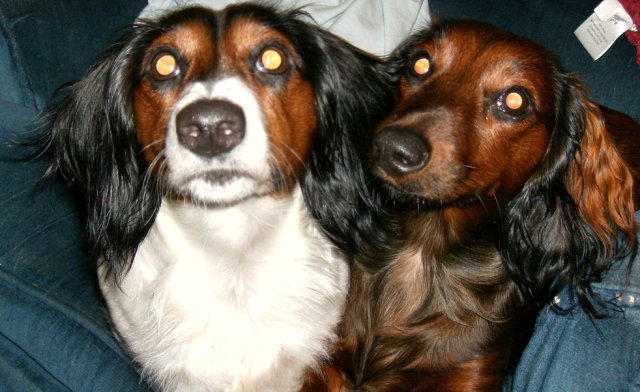 Dogs Figthing
Question
Stella and Scarlett
I have 2 minature dachshun
Dogs Figthing
Question
Stella and Scarlett
I have 2 minature dachshun
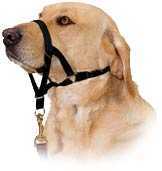 head collar on dogs
Question
head collar on dogs
hello madam, may i know wh
head collar on dogs
Question
head collar on dogs
hello madam, may i know wh
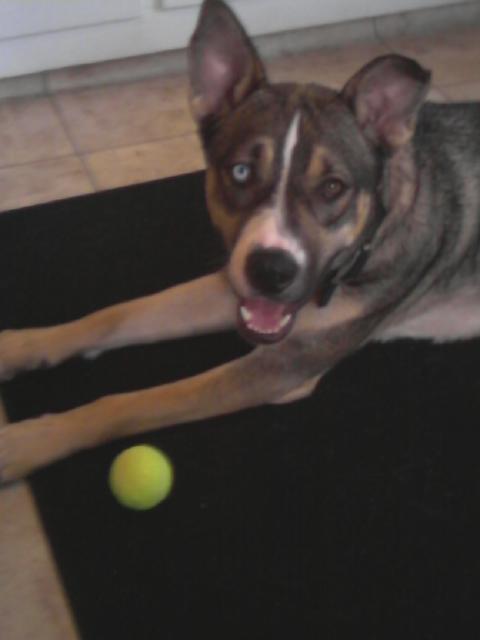 Dog tackling
Question
My dog
I would like to know a technique or a t
Dog tackling
Question
My dog
I would like to know a technique or a t
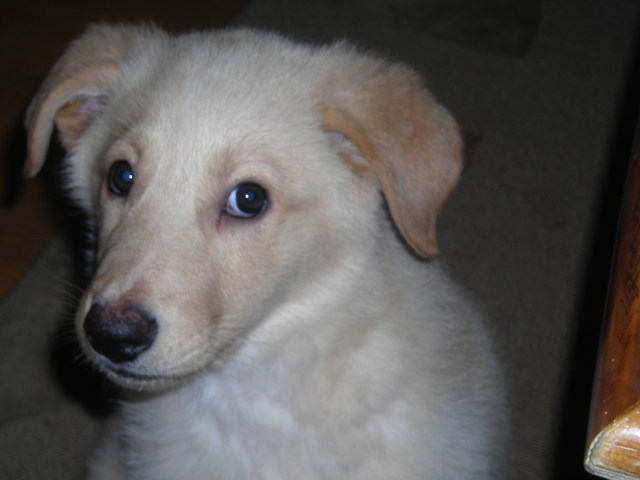 housetraining
QuestionQUESTION: We have a 10 week old retriever/colli
housetraining
QuestionQUESTION: We have a 10 week old retriever/colli
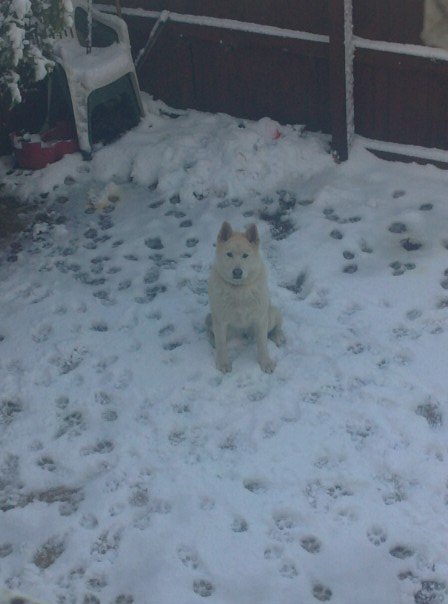 Dog Training And Punishment?
Question
Maya
hi there i have an akita X husky,
Dog Training And Punishment?
Question
Maya
hi there i have an akita X husky,